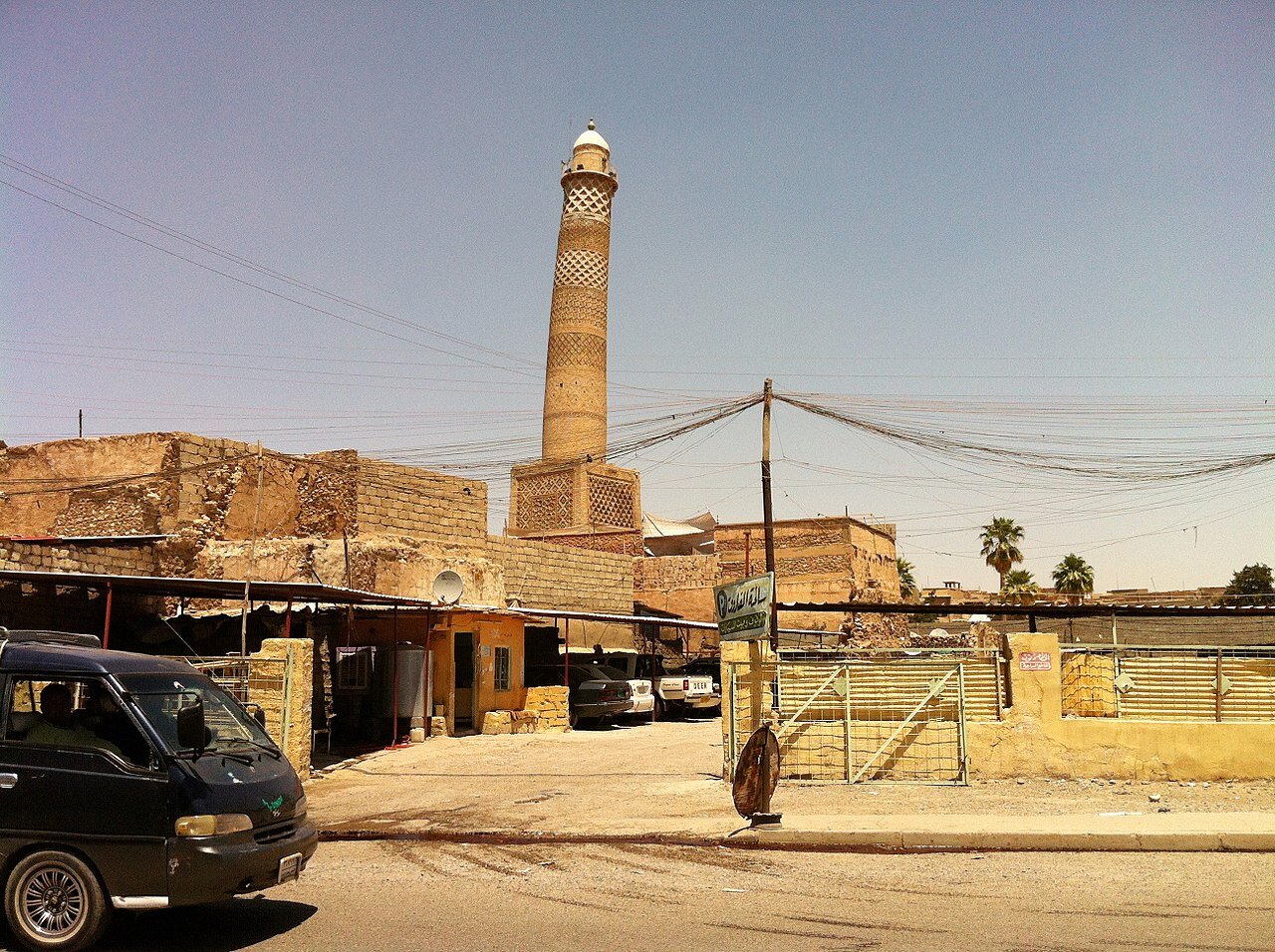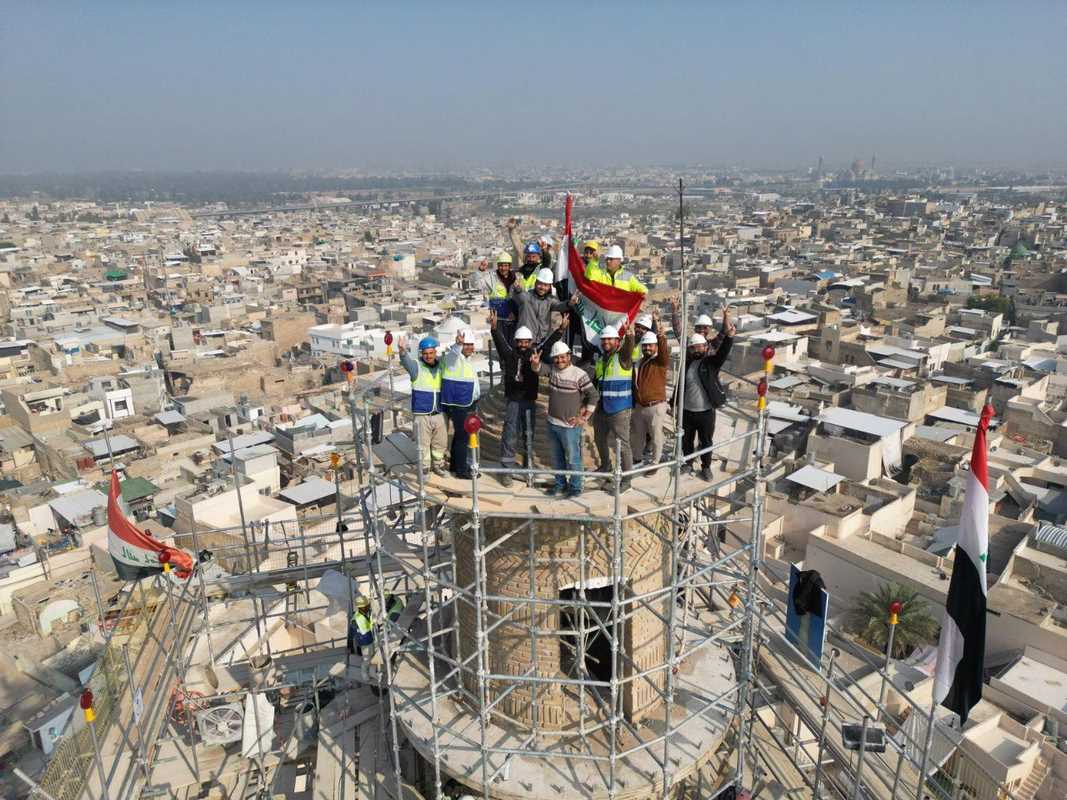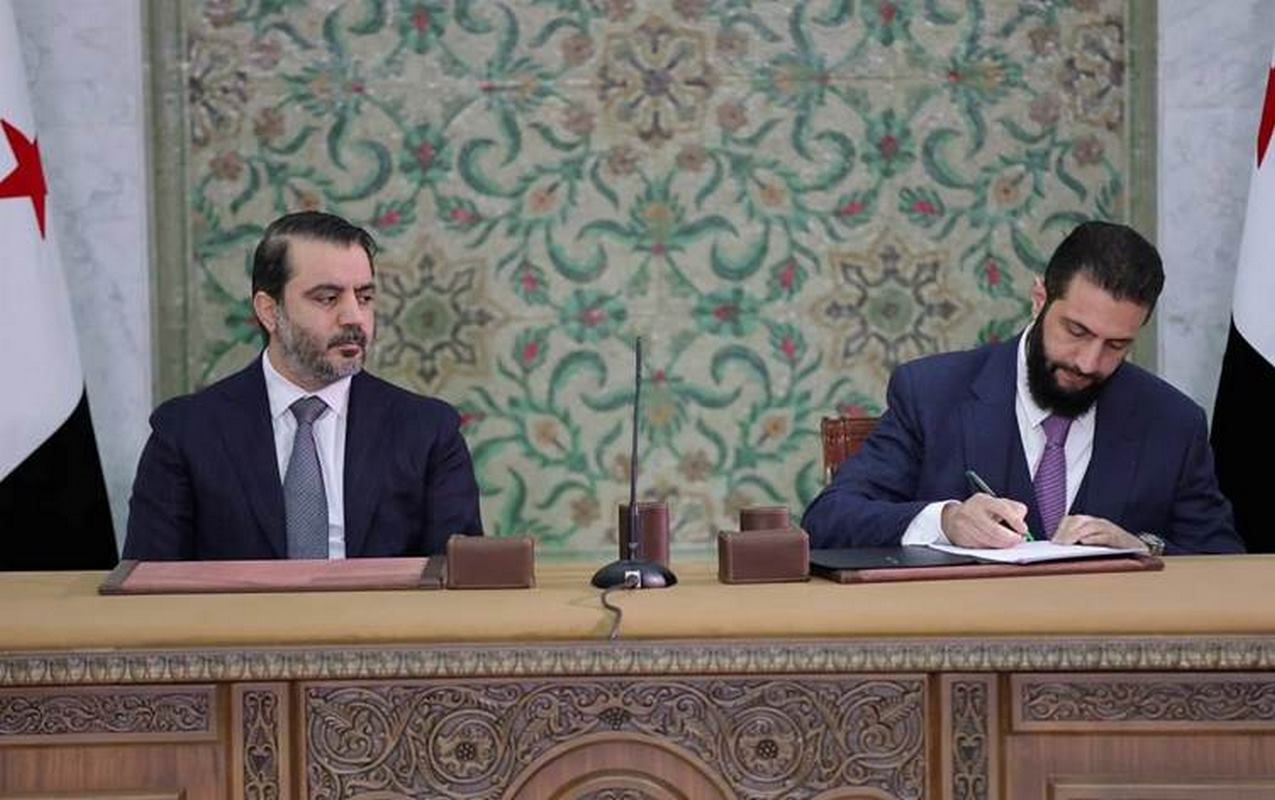Workers in Iraq’s northern city of Mosul have finished building the famous leaning minaret, destroyed in 2017 by ISIS fighters in the final stages of the conflict to unravel their control in the country.
Built by the Seljuk ruler Nuri al-Din in the 12th century, its famous lean, reminiscent of Christendom’s Leaning Tower in Pisa, had been standing for 850 years. It was also called al-Hadba or “the hunchback”.
Beaming workers raising peace signs in high-vis jackets and hard hats smiled broadly while hoisting an Iraqi flag atop the tower, perched precariously on the hive of scaffolding in photos released by UNESCO. The UN organization launched the Reviving the Spirit of Mosul campaign in 2018 to restore the many monuments in the city that were destroyed by the terrorists, including the al-Nuri Mosque and its minaret.
“Today UNESCO celebrates a landmark achievement,” the UN cultural agency’s Iraq office said. “The completion of the shaft of the Al-Hadba Minaret marks a new milestone in the revival of the city, with and for the people of Mosul”.
“UNESCO is grateful for the incredible teamwork that made this vision a reality. Together, we’ve created a powerful symbol of resilience, a true testament to international cooperation. Thank you to everyone involved in this journey”.

Internationally speaking the work in Mosul on al-Hadba and beyond included the World Monument Fund, the Smithsonian Institute, The Louvre, the International Alliance for the Protection of Heritage in Conflict Areas, and the United Arab Emirates, which as a nation generously funded much of the rebuilding.
UNESCO Director-General Audrey Azoulay celebrated the completion of the minaret by posting “We did it!” on social media site X. “Can’t wait to return to Mosul to celebrate the full completion of our work,” she said, adding that much of it was done by locals, or Moslawis.
Historic moments are in Mosul as the rebuilding of Al-Hadba Minaret is completed through the @UNESCO generously supported by the United Arab Emirates, in collaboration with Iraq’s Ministry of Culture and Sunni waqif.#ReviveTheSpiritOfMosul pic.twitter.com/0CgP4WoXga
— تُراث المَوصِل Mosul Heritage (@Mosul_heritage) November 13, 2024
Gradually healing
Additional projects in the city are seeing progress.
Extensive rehabilitations of the House of Prayer next to Al-Saa’a Convent that began in 2022 have now been completed. The first school for girls in all of Mesopotamia, (1866) the House of Prayer was repaired with help from the International Alliance for the Protection of Heritage in Conflict Areas and the Dominican Order from Italy.
Al-Saa’a Convent has also been fully reconstructed with the financial support of the United Arab Emirates, as has another Christian landmark, the al-Tahera Church.
“With the financial support of the European Union, UNESCO has carefully rebuilt 124 heritage houses, restoring original details and reviving traditional architectural styles,” UNESCO wrote in a project update in July.
“Many of them are now inhabited again. The project also included upgrading public alleyways and infrastructure to increase the appeal of the historic neighborhoods for the residents. In addition, the project involved the complete reconstruction of two heavily damaged and historically significant palatial houses—Suliman Al Sayegh and Al Zyada palatial houses—owned by the Iraqi Ministry of Culture”. WaL
PICTURED ABOVE: Workers celebrate from atop the new al-Nuri Minaret. PC: UNESCO, retrieved from X.



